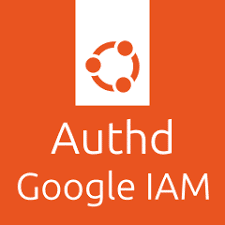-
- Resolving Issues with Authd Integration with Google IAM
- Understanding Authd and Google IAM
- Common Issues with Authd Integration
- Configuration Steps for Successful Integration
- Step 1: Verify Google IAM Permissions
- Step 2: Configure Authd with Google IAM Credentials
- Step 3: Test Authentication Flow
- Step 4: Monitor Logs for Errors
- Practical Examples
- Best Practices for Integration
- Case Studies and Statistics
- Conclusion
Resolving Issues with Authd Integration with Google IAM
In today’s cloud-centric world, integrating authentication services with Identity and Access Management (IAM) systems is crucial for maintaining security and efficiency. Authd, a popular authentication daemon, can be integrated with Google IAM to streamline user access and enhance security protocols. However, issues can arise during this integration process, leading to potential security vulnerabilities or access problems. This guide aims to provide a comprehensive approach to resolving these issues, ensuring a smooth and secure integration.
Understanding Authd and Google IAM
Authd is a lightweight authentication daemon that facilitates secure access to various services. Google IAM, on the other hand, provides a unified access control system for Google Cloud resources. Integrating these two systems allows organizations to leverage Google’s robust security features while maintaining the flexibility of Authd.
Common Issues with Authd Integration
Before diving into the resolution steps, it’s essential to understand the common issues that may arise during the integration process:
- Authentication failures due to misconfigured credentials.
- Insufficient permissions leading to access denials.
- Network connectivity issues affecting service communication.
- Incompatibility between Authd versions and Google IAM APIs.
Configuration Steps for Successful Integration
To resolve issues with Authd integration with Google IAM, follow these detailed configuration steps:
Step 1: Verify Google IAM Permissions
Ensure that the service account used by Authd has the necessary permissions in Google IAM. This includes:
- Roles such as
roles/iam.serviceAccountUser. - Access to specific Google Cloud resources as required by your application.
Step 2: Configure Authd with Google IAM Credentials
Update the Authd configuration file to include the Google IAM service account credentials. This can be done by editing the Authd.conf file:
service_account_file = "/path/to/your/service-account.json"Step 3: Test Authentication Flow
Run a test to ensure that Authd can authenticate users against Google IAM. Use the following command:
Authd test-auth --user Check the output for any errors and ensure that the authentication is successful.
Step 4: Monitor Logs for Errors
Enable logging in Authd to capture any errors during the authentication process. Review the logs for common error messages that can guide troubleshooting:
tail -f /var/log/Authd.logPractical Examples
Consider a scenario where a company integrates Authd with Google IAM to manage access for its employees. After following the configuration steps, they encounter an authentication failure. By checking the logs, they discover that the service account lacks the roles/iam.serviceAccountUser role. After updating the permissions, the authentication succeeds.
Best Practices for Integration
To enhance the performance and stability of your Authd and Google IAM integration, consider the following best practices:
- Regularly update Authd to the latest version to ensure compatibility with Google IAM APIs.
- Implement least privilege access by granting only necessary permissions to the service account.
- Utilize Google Cloud’s monitoring tools to track authentication attempts and identify anomalies.
- Conduct periodic audits of IAM roles and permissions to ensure compliance and security.
Case Studies and Statistics
A recent study by Cloud Security Alliance found that organizations implementing robust IAM solutions, including integrations like Authd with Google IAM, experienced a 30% reduction in security incidents. This statistic underscores the importance of proper configuration and monitoring in maintaining secure access controls.
Conclusion
Integrating Authd with Google IAM can significantly enhance your organization’s security posture, but it is not without its challenges. By following the configuration steps outlined in this guide, monitoring logs, and adhering to best practices, you can effectively resolve issues and ensure a seamless integration. Remember, maintaining security is an ongoing process that requires regular reviews and updates to your authentication systems.
